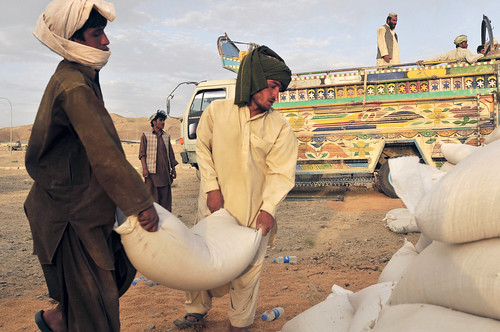
The economic security of individuals and households is a major challenge for development interventions in conflict-affected countries. Once the conflict is over and humanitarian aid leaves, how do you feed people, secure livelihoods and improve markets and market access? An important finding from a major EU-funded research program on conflict analysis is that the answer to this question is closely linked to processes of institutional change that take place during violent conflict.
As the research conducted thus far as part of the MICROCON project illustrates, violent conflicts kill and destroy. However, conflict-affected countries are also characterized by intense institutional change that needs to be better understood. Institutional change takes place when different actors contest and sometimes win over former state institutions, transforming social, economic and political structures, organizations and norms.
Research conducted in the MICROCON project over the last six years has found that these institutional changes have profound impacts on the survival and security of ordinary people, and are central to explaining why armed conflicts persist, why they may mutate into different forms of violence and criminality, and why sometimes peace prevails. Furthermore, because they shape the distribution of political power, these forms of institutional transformation determine also how development processes succeed or fail in reducing poverty and promoting economic stability (more details here).
A common feature of conflict-affected countries is the breakdown of state functions, including its monopoly of violence and the ability to deliver public goods. The literature has described these processes as forms of ‘state collapse’ or ‘state failure’. However, the collapse of state institutions in countries affected by conflict is not necessarily accompanied by the collapse of order and governance.
In reality, order tends to emerge in many contexts as different actors gain control over contested areas, and replace weak or absent state institutions. In many developing countries, these actors may include community members that form collective arrangements to access goods and security, or traditional authorities that take on state functions. In conflict areas, these actors are often linked to, or are themselves, armed groups (e.g. rebel groups, militias, gangs) that aim to control populations. Control is frequently—although not exclusively—achieved through violent means.
These local systems of order are an important mechanism in the transition of conflict-affected societies’ transition to stability because they affect how people live and survive, mediate the engagement of citizens with state institutions, and tend to persist beyond the end of the initial conflict, making them a key factor in how peace and development efforts will succeed in the long term.
However, the control of populations and the provision of public goods and security by non-state actors are typically viewed suspiciously by the international policy community, which associates the actions of these groups with illegitimacy, illegality and informality. The problem is that in contexts of violent conflict—even during the post-conflict phase—state structures are absent, do not work, or are illegitimate in the eyes of the populations they aim to rule.
New evidence suggests that non-state actors and the organizations they establish sometimes operate sophisticated structures of governance, promoting the rule of law in some form or other, and providing security, food and basic services. Despite the fact that these structures are often illegitimate or illegal, we should at the very least seek to understand them—and we need to do so in a systematic and rigorous way.
This is important because these forms of institutional transformation shape the effectiveness of interventions in countries affected by violent conflict, including the establishment of elections, the enforcement of property rights, the reform of justice and security structures, and the improvement of systems of food distribution, employment and social service provision.
Development interventions cannot therefore be de-coupled from institutional and political processes that emerge during violent conflict and persist once the conflict is over. This implies acknowledging that actors beyond the state shape levels of economic, social and physical vulnerability of the very same populations targeted by development interventions. This is an issue where development policy still needs to make significant progress.
Further reading
- Arjona, A., Justino, P. and Kalyvas, S., Agency and Governance in Contexts of Violent Conflict, forthcoming (http://www.esrc.ac.uk/my-esrc/grants/res-167-25-0481/read)
- Justino, P. 2013. ‘Research and Policy Implications from a Micro-Level Perspective on the Dynamics of Conflict, Violence and Development’, HiCN Working Paper no. 139, The Households in Conflict Network
- Justino, P. 2012. ‘Nutrition, Governance and Violence: A Framework for the Analysis of Resilience and Vulnerability to Food Insecurity in Contexts of Violent Conflict’, HiCN Working Paper no. 132, The Households in Conflict Network
Patricia Justino, Institute of Development Studies, Brighton.
For additional reading on this topic please see:
Education for Young People in Fragile Situations – The Need for Support
Rosemary Thorpe: Horizontal Inequalities as a Cause of Conflict
Arab Spring but Poor Harvests: Why Rural Tunisia Matters for the Success of the Revolution
For more information on issues and events that shape our world please visit the ISN’s Weekly Dossiers and Security Watch.

